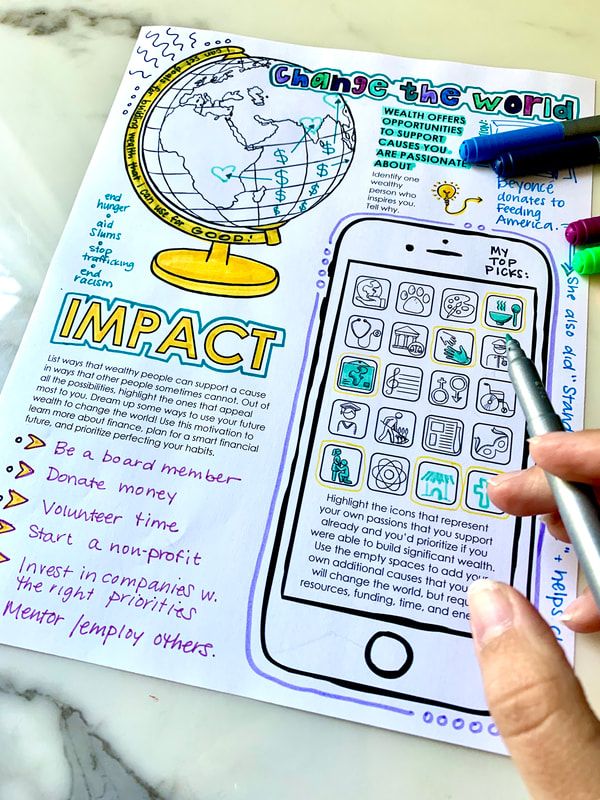Introduction:
Financial literacy is a crucial skill for middle school students to learn. It is the foundation upon which they will build their knowledge of personal finance, budgeting, and saving for the future. To make learning about money management fun and engaging for students, here are 20 financial literacy activities that you can use in your middle school classroom:
1.Budgeting Basics:
Have students create a simple budget for their fictional monthly allowance, illustrating how they would allocate funds towards savings, entertainment, and essential expenses.
2.Coin Math:
Teach students how to count, add, and subtract using coins to improve familiarity with currency.
3.Wants vs. Needs:
Help students identify the difference between wants and needs by preparing shopping lists and discussing the importance of prioritizing expenses.
4.Bank Account Simulation:
Set up a mock bank account system where students save money throughout a semester while keeping track of their deposits, withdrawals, and balance.
5.Create a Business Plan:
Encourage entrepreneurial thinking by having students develop a business plan for a fictional small business or service.
6.Money Management Board Games:
Use board games like Monopoly or The Game of Life that teach money management skills in an interactive way.
7.Investment Games:
Design an investment game that demonstrates risk management and the impact of interest rates on savings accounts or stocks.
8.Saving Goals Activity:
Help students set short-term and long-term savings goals while discussing strategies to achieve them.
9.Charitable Giving Discussion:
Lead a discussion about charitable giving and introduce the concept of philanthropy to demonstrate money’s impact on communities both local and global.
10.Online Financial Blogs Exploration:
Have students research personal finance blogs that provide tips for financial success and summarize their findings in a class discussion.
11.Credit Card Investigation:
Discuss interest rates, credit scores, debt management, and responsible credit card use with your middle school students.
12.Interactive Financial Podcasts:
Assign age-appropriate financial podcasts that discuss various money management principles and the importance of planning for retirement.
13.Host a Guest Speaker:
Invite a local financial expert or accountant to speak to your class about their experiences in money management.
14.Calculate Compound Interest:
Teach students the concept of compound interest using simple calculations and emphasize its impact on long-term savings.
15.The Stock Market Game:
Divide students into teams and have them invest virtual money in imaginary stock portfolios to understand the fundamentals of investing in stocks.
16.Comparison Shopping:
Demonstrate how to compare prices between similar products, helping students become savvy shoppers.
17.Financial Journaling:
Encourage students to maintain personal finance journals that track their spending habits and monitor their progress toward savings goals.
18.Coupon Scavenger Hunt:
Provide various coupons, flyers, and sales promotions to help teach students how to maximize savings while shopping smartly.
19.Financial Vocabulary Quiz:
Create a quiz containing key financial terms and concepts for students to learn essential financial vocabulary.
20.Grocery Budget Challenge:
Have each student plan a week’s worth of meals based on a set budget, emphasizing the importance of wise spending and avoiding food waste.
Conclusion:
Financial literacy is an essential life skill for middle school students as they prepare for adult responsibilities. Implement these 20 activities in your classroom to engage and inspire students as they develop money management skills and lay the foundations for future financial success.





